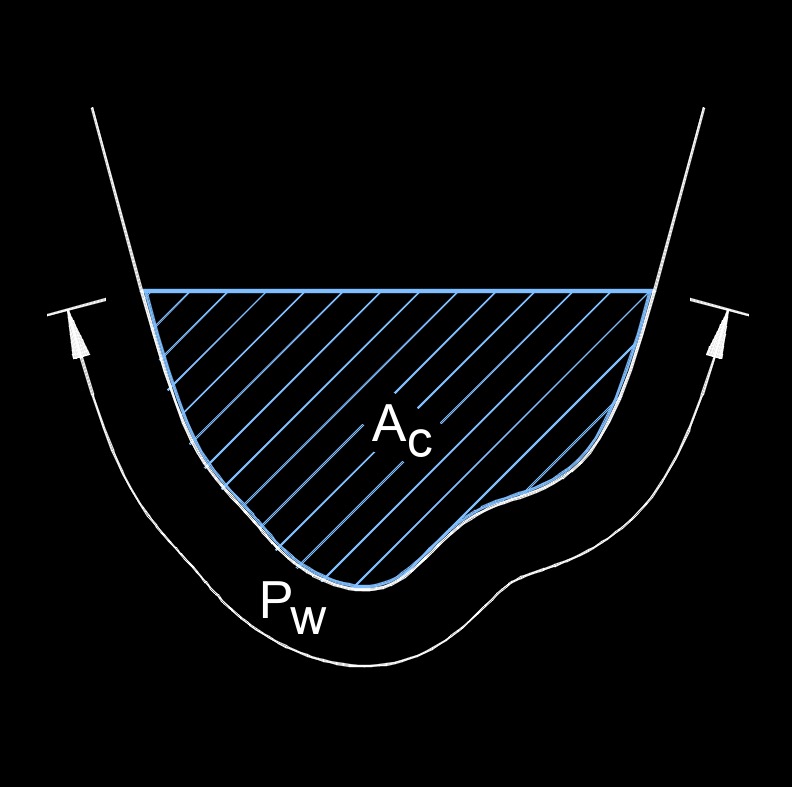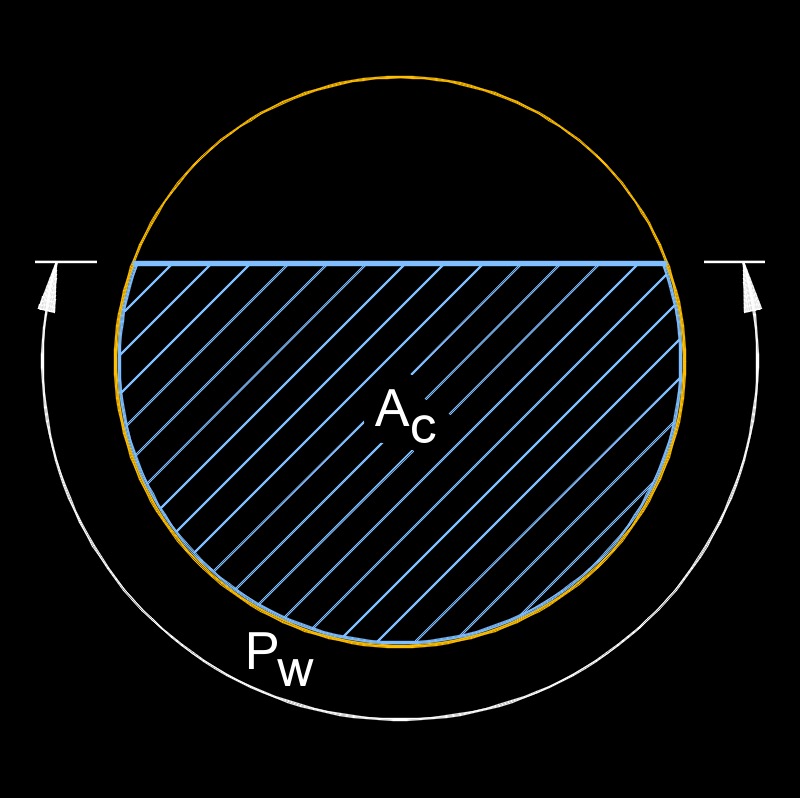Hydraulic Radius
Hydraulic Radius Formula |
||
|
\( r_h \;=\; \dfrac{ A_c }{ P_w }\) (Hydraulic Radius) \( A_c \;=\; r_h \cdot P_w \) \( P_w \;=\; \dfrac{ A_c }{ r_h }\) |
||
| Symbol | English | Metric |
| \( r_h \) = Hydraulic Radius | \( ft \) | \( m \) |
| \( A_c \) = Flow Area Cross-section | \( ft^2 \) | \( m^2 \) |
| \( P_w \) = Fluid Wetting Perimeter | \( ft \) | \( m \) |
Hydraulic radius, abbreviated as \(r_h\), is a parameter used in fluid dynamics to characterize the efficiency of flow in an open channel or pipe. It is a measure of the area cross-sectional of flow relative to the wetted perimeter of the channel or pipe. The hydraulic radius represents the average distance from the center of the flow to the channel boundary. It is a concept that relates to the distribution of flow within a channel. In simple terms, it quantifies how efficiently a channel can convey flow.


The hydraulic radius is particularly useful in open channel hydraulics, where the flow is not completely enclosed within a pipe. It helps to characterize the flow resistance and friction losses in open channels. A larger hydraulic radius indicates a more efficient flow, as a larger portion of the area cross-sectional is contributing to the flow compared to the wetted perimeter.
The hydraulic radius is used in various equations and formulas in fluid dynamics, such as the Manning's equation or the Chezy equation, to estimate flow velocities, hydraulic gradients, or other flow parameters. It provides a measure of the efficiency and conveyance capacity of a channel or pipe.

